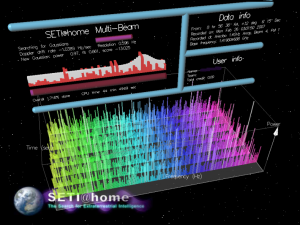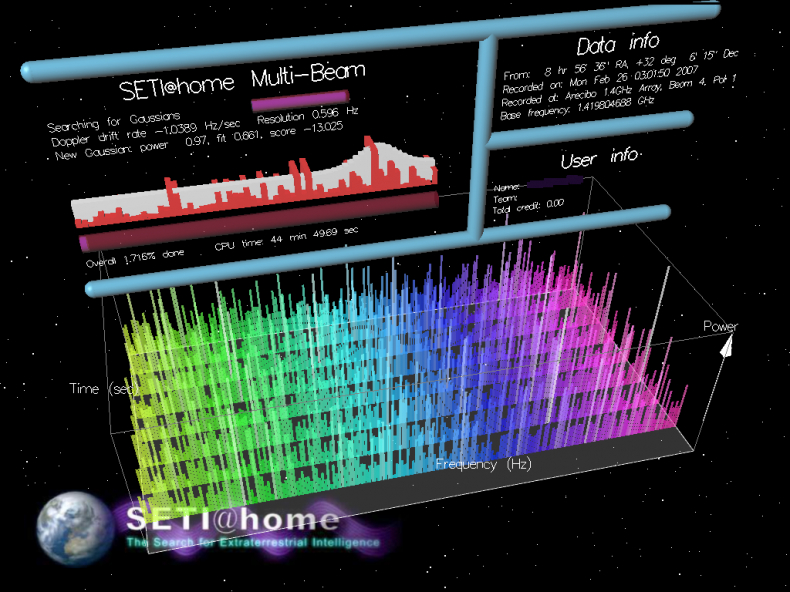
Too Bad We Didn’t Find Aliens Before the Internet Was Invented
Too Bad We Didn’t Find Aliens Before the Internet Was Invented
The guidelines for announcing the discovery of intelligent life elsewhere in the universe were drawn up before the widespread use of the Internet. That’s a problem, say SETI researchers.
One of humanity’s most significant events will be the discovery of intelligent life elsewhere in universe. Back in the 1980s, a group of astronomers involved in the Search for Extraterrestrial Intelligence became concerned about the way news of this first contact might spread around the world.
Their worry was that the unplanned spread of information might be hugely damaging. Information could become distorted, and people might panic, leading to widespread confusion and even violence.
Indeed, something like this occurred in the 1940s following the famous War of the Worlds broadcast of a fictional news story describing Earth being invaded by Martians. In various places the story was accepted at face value, and in Ecuador, the news triggered confusion and riots that led to the death of some 20 people.
So in 1989, a team from the International Academy of Astronautics drew up a set of guidelines for releasing information about potential contact events. The guidelines have since been widely accepted by SETI researchers and other scientists likely to be involved in a contact announcement.
But there is a problem. Since the guidelines were written, the way news stories evolve and spread through society has changed dramatically. In the 1980s, 24-hour news channels were a novelty. Now they have been superseded by Internet news sites and aggregators such as Reddit and Slashdot and by online social media sites such as Twitter, Facebook, YouTube, and so on.
These communication channels not only help to spread news but are also a factor in the way it can be distorted and changed. Consequently, the guidelines for announcing a contact event need to be urgently revised, say Duncan Forgan and Alexander Scholz at the University of St Andrews in the U.K. Today, they outline the new forces at work, how they might influence the way news about a first contact might spread and how the researchers involved should be prepared.
Openness is a key part of their recommendations. Forgan and Scholz begin by saying that researchers must be prepared in advance to release news when and if it arrives. That means regularly assessing popular communication channels, and being aware that they are likely to change over time. “SETI scientists should gauge how the public consumes news at the beginning of the search,” they say.

Before detection, these researchers should publish detailed descriptions of the experimental setup and progress, as well as criteria for tentative and confirmed detections. All of this would be then be available as background information when a detection occurs. Forgan and Scholz say this should include a detailed description of how the team will communicate with the public in the event of a signal detection.
But they also recommend caution. The scientists involved in a detection are likely to come under intense media scrutiny. Forgan and Scholz say it is a good idea for all those involved to review their online footprint in advance, to protect their privacy and ensure their safety in the event that the media hordes descend.
Next, the pair address the question of what should happen if a tentative signal is discovered. Again, their main focus is on openness. “In the event of a tentative detection, SETI scientists should submit their findings for a peer-reviewed publication, while simultaneously publishing their candidate signal, and all accompanying data in full, using suitably robust Web and cloud-based servers,” they say.
Once this happens, there will be huge focus on whether the detection is confirmed. And once again openness is the best policy. “If the detection cannot be confirmed, then the team must publish a statement clearly stating that the signal cannot be confirmed to be of ETI origin,” they recommend.
But everything changes if the detection is confirmed. If that happens, Forgan and Scholz say the researchers involved must commit to the ongoing media conversation as long as is humanly possible.
That might seem easy to agree to now but this will be a difficult job. The individuals responsible for first contact are likely to quickly become among the most famous people on the planet. They may even become among the most famous in history. That will be a mixed blessing.
Nevertheless, these issues are worth considering now, and the guidelines revised in a way that takes into account modern communication methods. The worst scenario is that news spreads in an unplanned way with little or no coordination among experts. So a little planning now could be hugely valuable in future.
Ref: arxiv.org/abs/1605.02947: #FoundThem 21st Century PreSearch and PostDetection SETI Protocols for Social and Digital Media

Leave a Reply